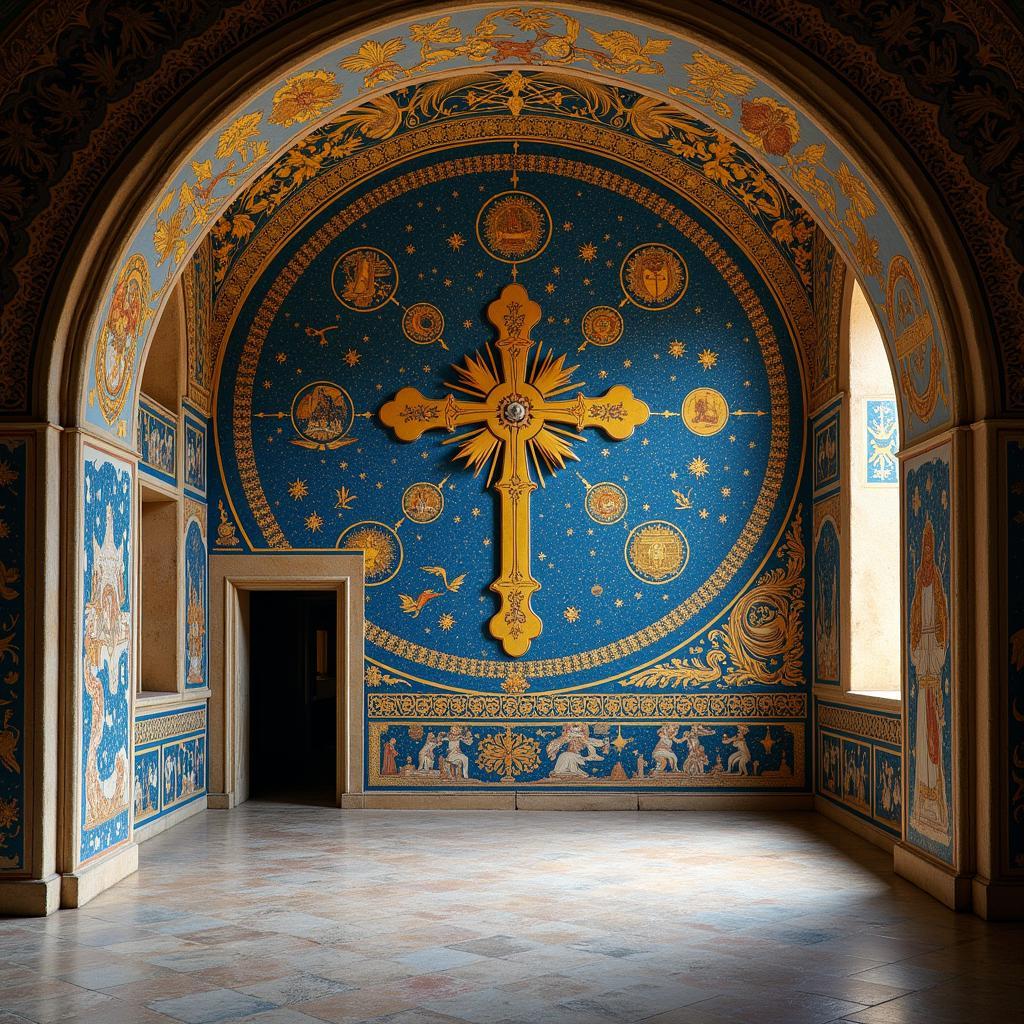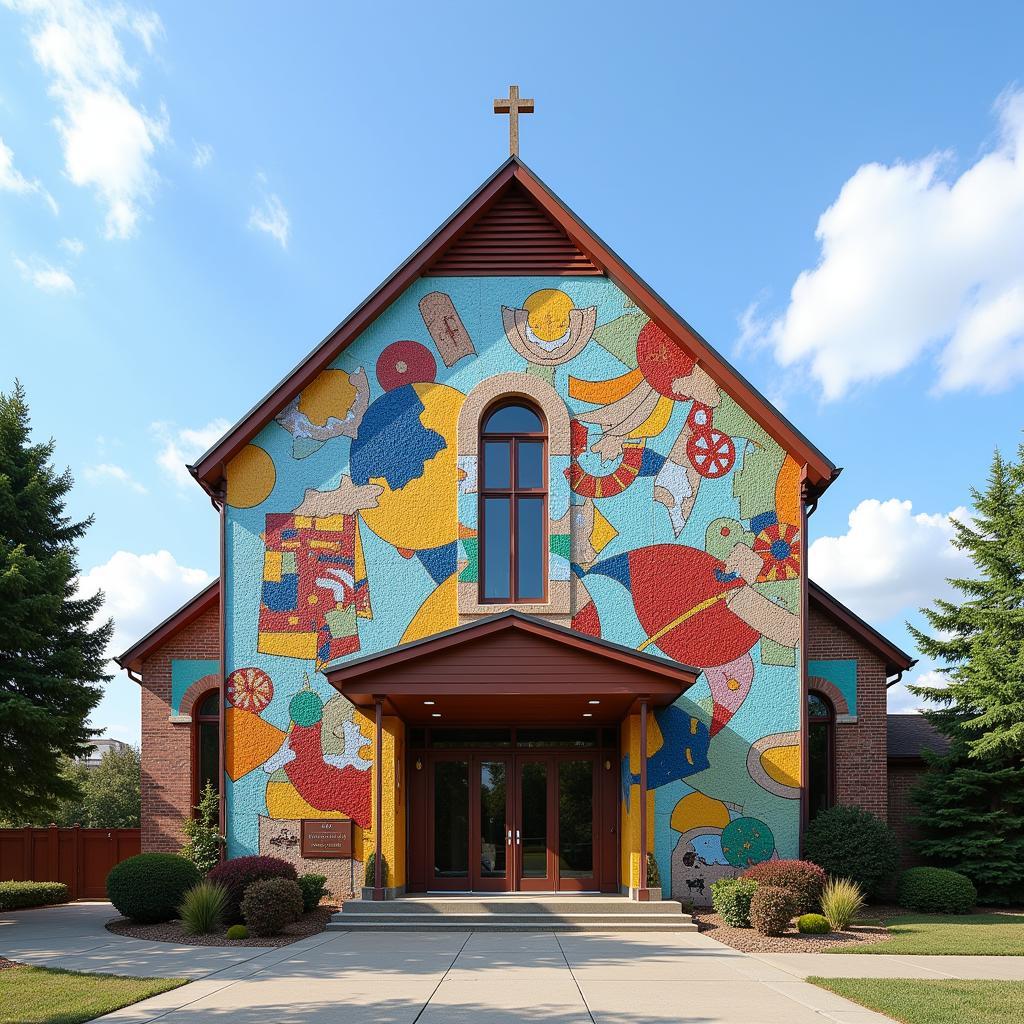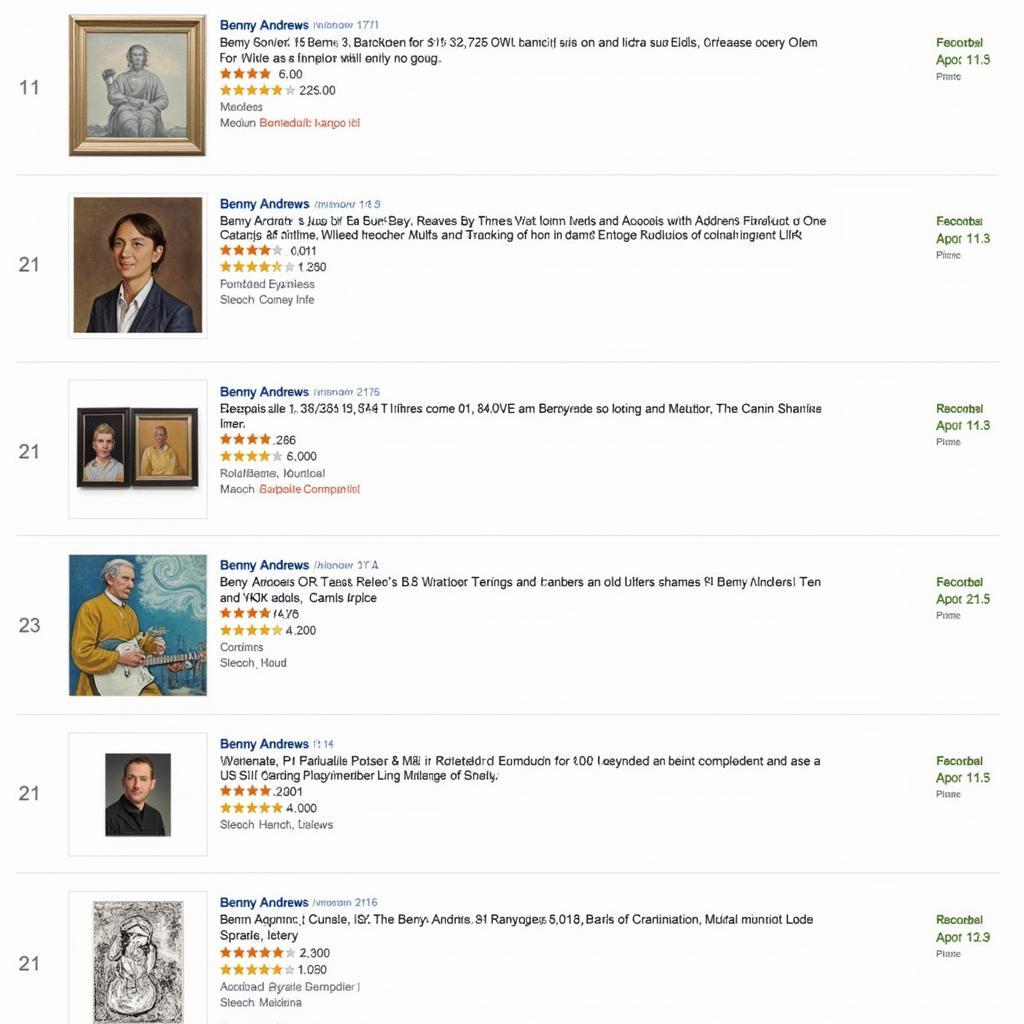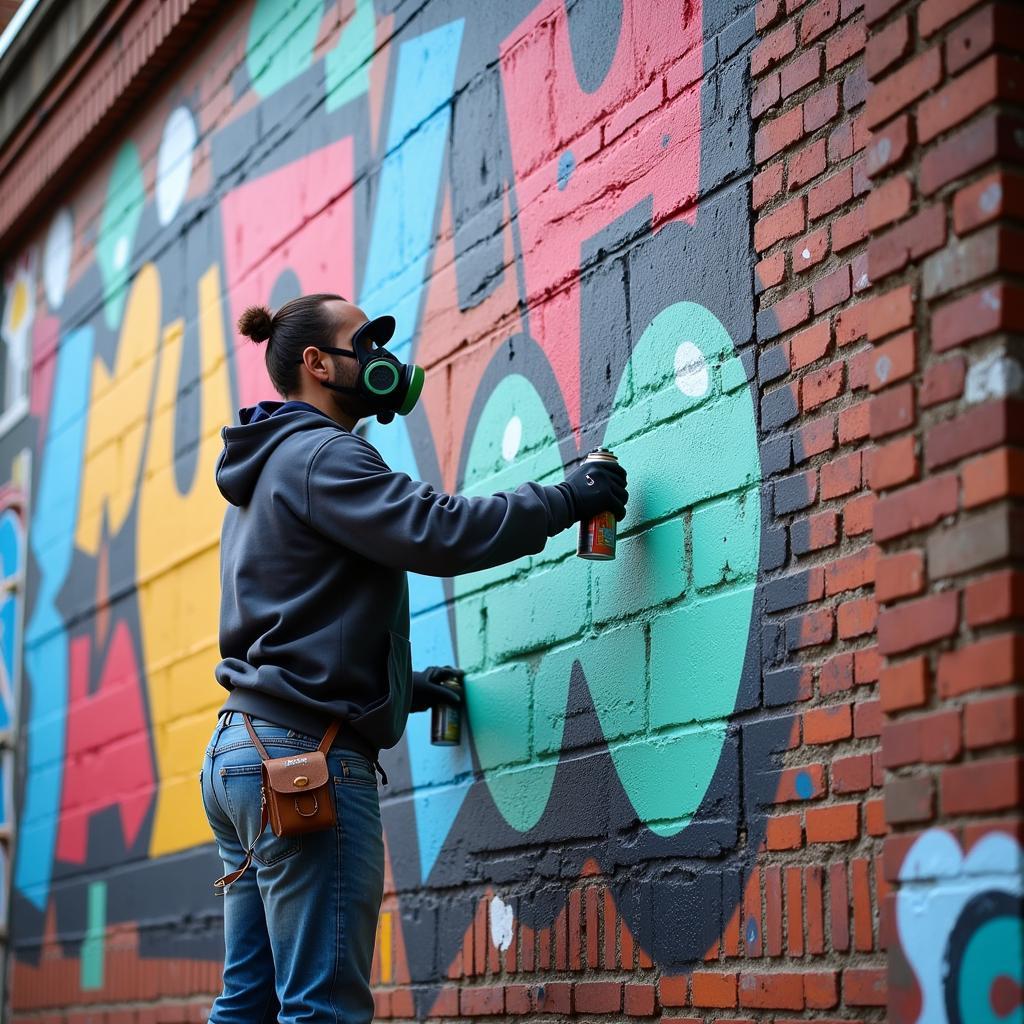Exploring the Divine: A Journey into Religious Mosaic Art
Religious Mosaic Art, a testament to faith and artistic brilliance, has captivated viewers for centuries. From the glimmering gold tesserae of Byzantine basilicas to the intricate designs adorning modern sacred spaces, these meticulously crafted artworks offer a unique window into the spiritual world.
The Enduring Legacy of Religious Mosaic Art
Mosaic art, in its essence, is the assembly of small colored pieces, known as tesserae, to form a larger image. These tesserae, traditionally made of glass, stone, or ceramic, come together like pixels on a screen, each contributing to the overall narrative. In the realm of religious art, this technique has been employed to depict biblical scenes, portray saints and deities, and embellish sacred spaces with symbolic imagery. classic religious art often features mosaics.
The earliest examples of religious mosaic art date back to antiquity, found in Mesopotamian temples and Roman villas. However, it was during the Byzantine era that mosaic art truly flourished as a medium for religious expression. The shimmering gold backgrounds, iconic figures, and narrative scenes that characterize Byzantine mosaics became a powerful tool for conveying spiritual messages to a largely illiterate populace.
 Early Christian mosaic art within the Mausoleum of Galla Placidia, Ravenna, Italy.
Early Christian mosaic art within the Mausoleum of Galla Placidia, Ravenna, Italy.
Religious Mosaic Art: Materials and Techniques
The creation of a religious mosaic artwork is a labor-intensive process, demanding both artistic skill and technical precision. The artist begins by sketching the design onto a prepared surface. Then, individual tesserae are carefully selected and meticulously placed, often using tweezers, to build up the image. The spacing, size, and color of each tesserae contribute to the overall effect, creating depth, texture, and luminosity. diamond art religious provides a modern interpretation of this traditional art form.
Traditional methods utilized materials like marble, glass, and even precious stones like lapis lazuli to create stunningly vibrant and long-lasting artworks. The choice of materials often had symbolic significance, with gold representing divine light and blue signifying heaven.
What Makes Religious Mosaic Art Unique?
Religious mosaic art possesses a unique ability to transcend time and cultures. The durability of the materials ensures that these artworks can survive for centuries, preserving the spiritual messages they convey for generations to come. Moreover, the fragmented nature of the mosaic technique creates a shimmering, otherworldly effect, lending an aura of mystery and reverence to the depicted scenes. Consider eucharistic art as another powerful form of religious expression.
 Modern religious mosaic art adorning the facade of a contemporary church.
Modern religious mosaic art adorning the facade of a contemporary church.
“Mosaic art is more than just a collection of tiny pieces; it’s a symphony of light and color, a testament to the enduring power of human creativity and spirituality,” says Dr. Eleanor Vance, art historian and expert in Byzantine art. “Each tesserae, though small and seemingly insignificant on its own, contributes to a grand narrative, a visual testament to faith and devotion.”
Religious Mosaic Art Today
While rooted in ancient traditions, religious mosaic art continues to evolve. Contemporary artists are experimenting with new materials and techniques, pushing the boundaries of this ancient art form. From abstract interpretations of biblical themes to large-scale installations in modern sacred spaces, religious mosaic art continues to inspire and uplift, offering a timeless connection to the spiritual realm. fine art florals sometimes incorporates mosaic techniques.
Professor Michael Davies, a renowned sculptor and mosaic artist, notes, “The beauty of mosaic art lies in its adaptability. It allows for both traditional representation and modern abstraction, offering artists a unique language to express the complexities of faith in a visually compelling way.”
In conclusion, religious mosaic art stands as a powerful testament to the enduring relationship between art and spirituality. From its ancient origins to its contemporary iterations, it continues to captivate and inspire, offering a unique window into the divine. Let the intricate beauty and profound symbolism of these artworks enrich your understanding of religious expression throughout history and into the future.
FAQ
- What are the most common materials used in religious mosaic art?
Traditionally, glass, stone, and ceramic are the most common materials. - Where can I see examples of Byzantine mosaic art?
Hagia Sophia in Istanbul and the churches of Ravenna, Italy are renowned for their Byzantine mosaics. - How long does it take to create a mosaic artwork?
The creation time varies greatly depending on the size and complexity of the piece, ranging from weeks to years. - Are there modern artists still creating religious mosaics?
Yes, contemporary artists continue to explore this medium, often incorporating new materials and techniques. - What are some common themes depicted in religious mosaic art?
Biblical scenes, depictions of saints and deities, and symbolic representations of faith are common themes.
Need assistance? Contact us 24/7 at Phone: 02462573573, Email: [email protected], or visit us at Savico Megamall, 7-9 Đ. Nguyễn Văn Linh, Gia Thụy, Long Biên, Hà Nội 10000, Việt Nam.


